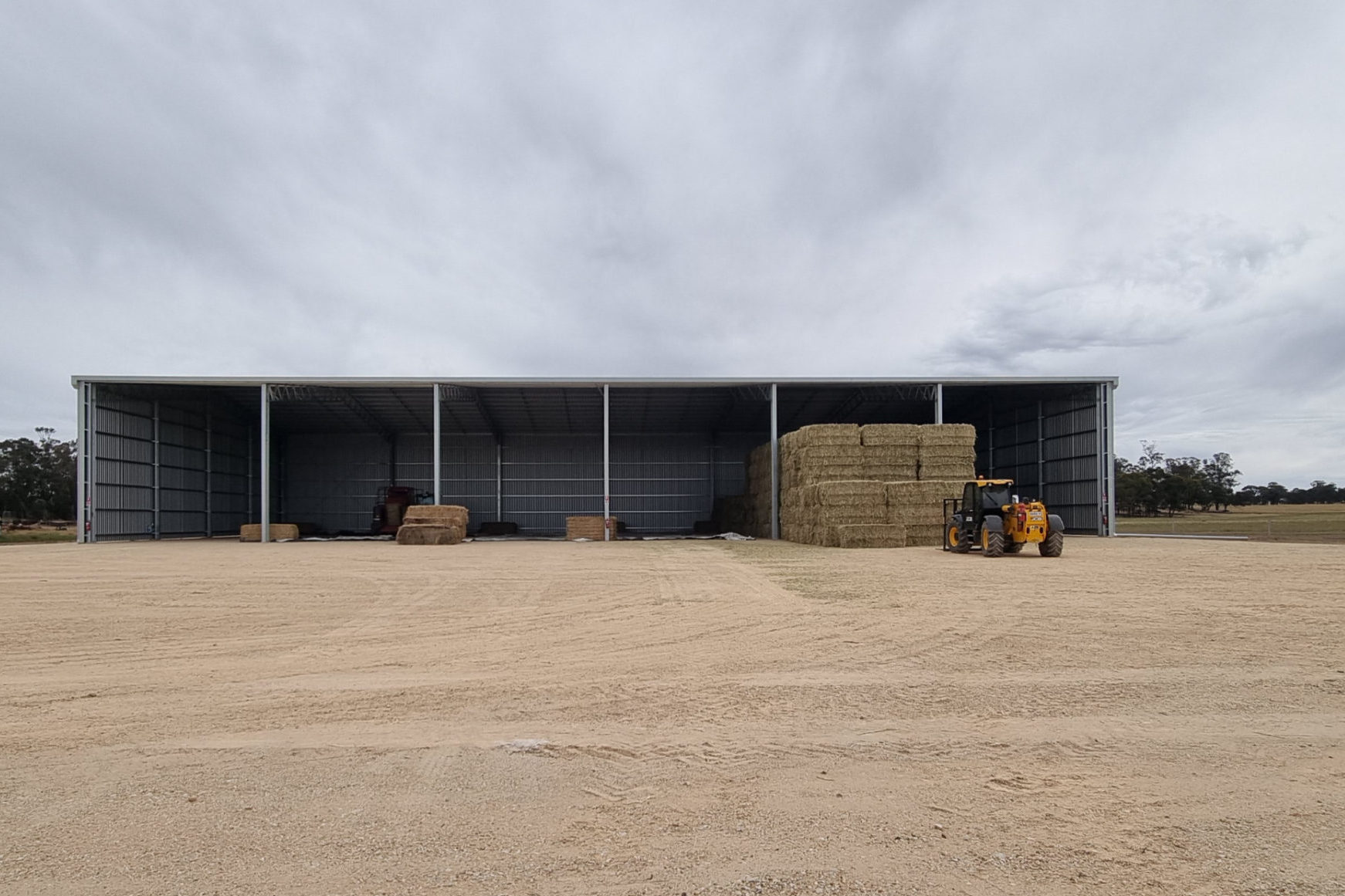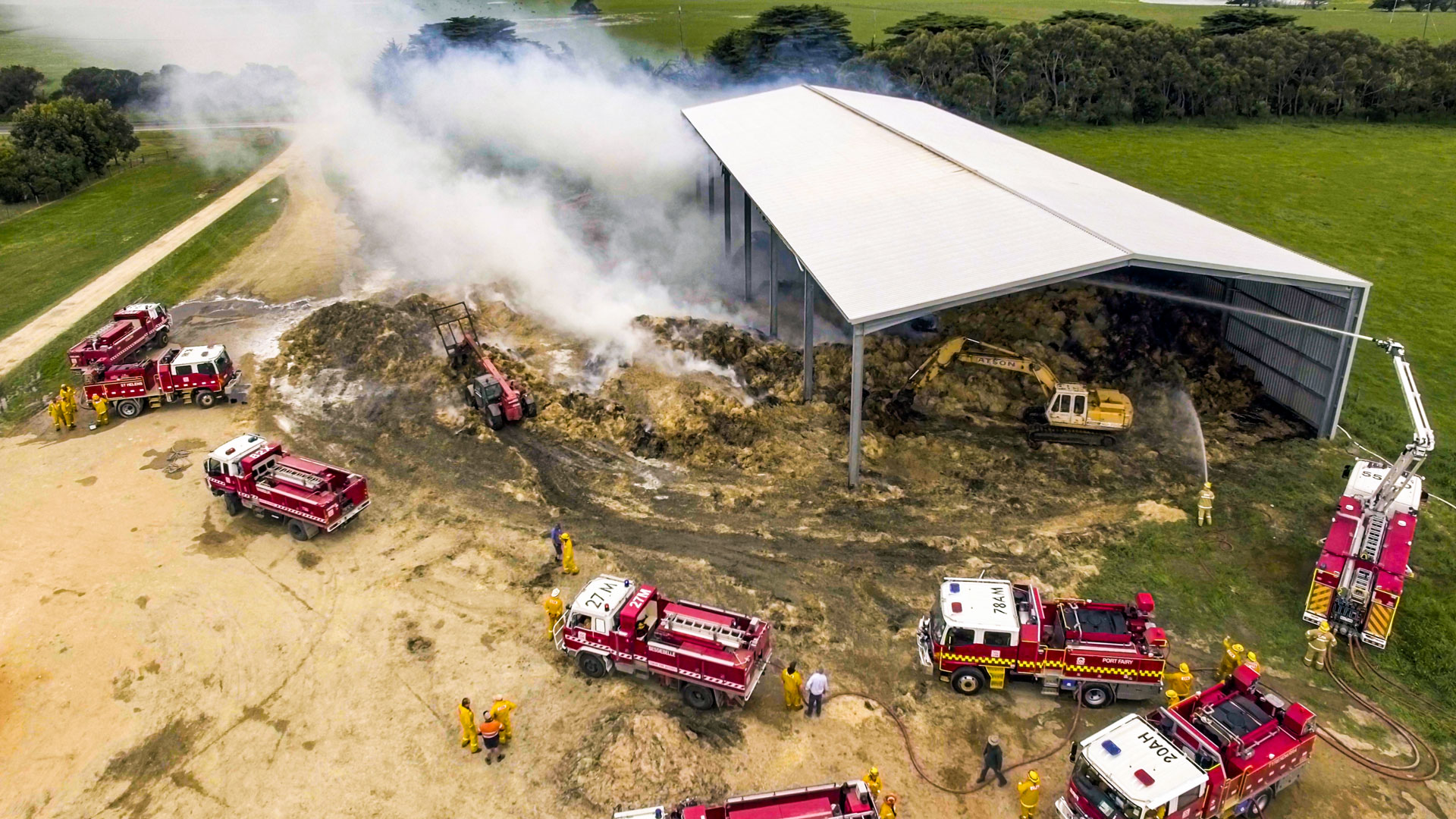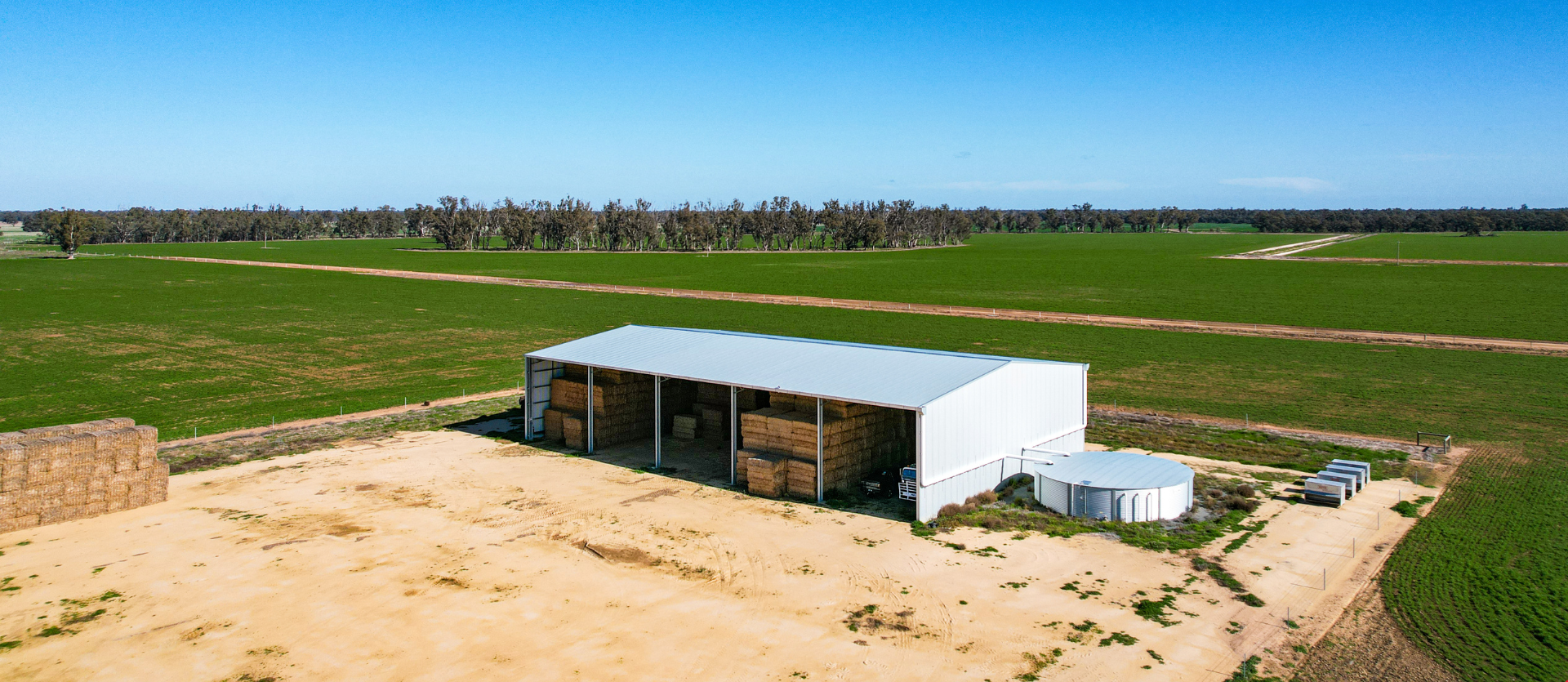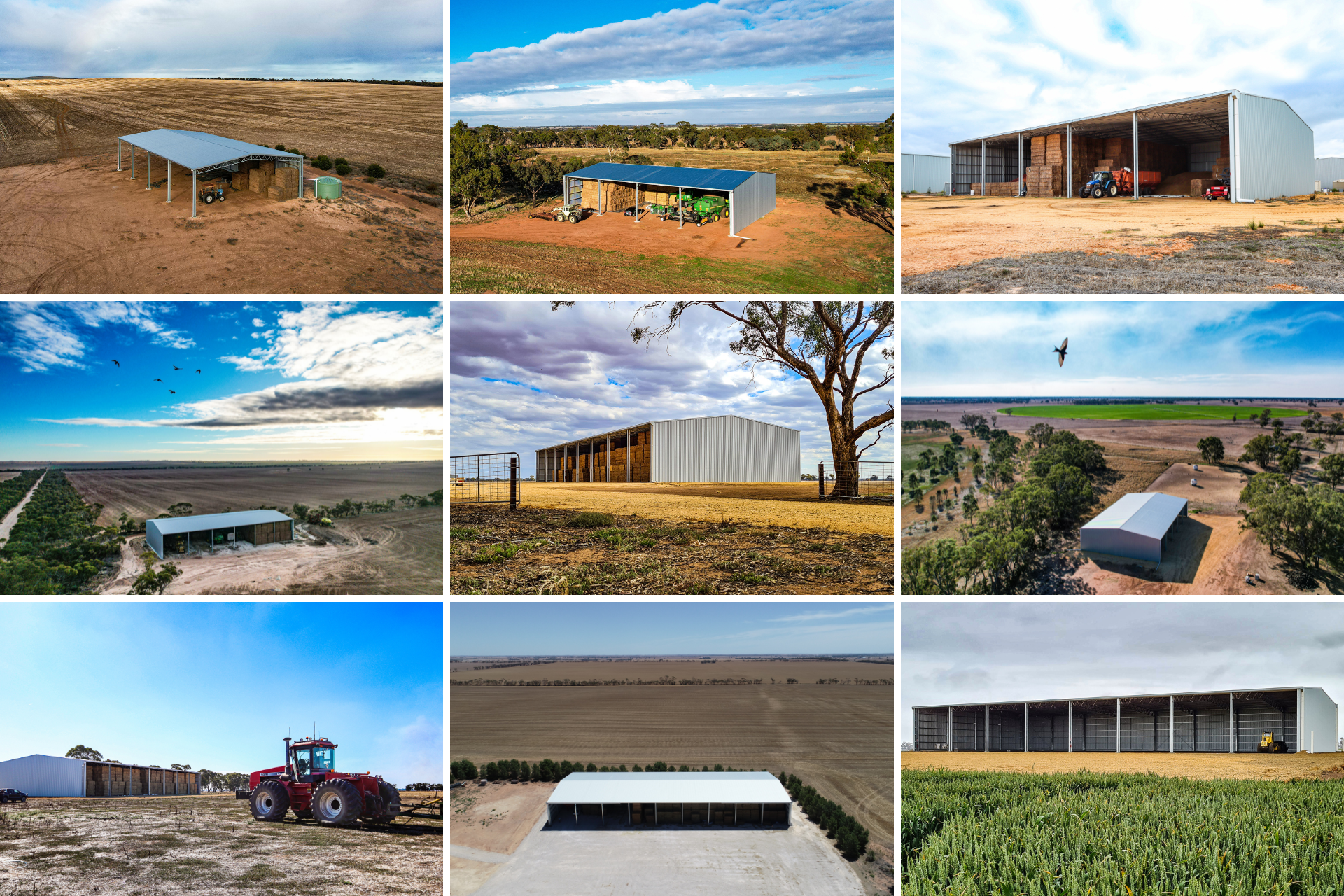Here’s how to store your hay so that it lasts, and the quality is maintained.
A three-sided open front hay shed
Storing your hay in a quality, three-sided, hot dip galvanised hay shed is the ultimate way to store your hay safely and securely.
A dedicated shed for your hay removes the risk of contamination that comes with co-storing your hay with chemicals. Similarly, storing your hay separately to your machinery reduces the risk of fire.
Our building consultants are more than happy to discuss the options for your shed project and provide a ‘cost per bale’ figure to determine what size and configuration will work out the most cost-effective for you.
Choose the right orientation
Facing your hay shed away from the prevailing weather protects your hay from the elements and prevents any dry matter loss caused by improper storage.
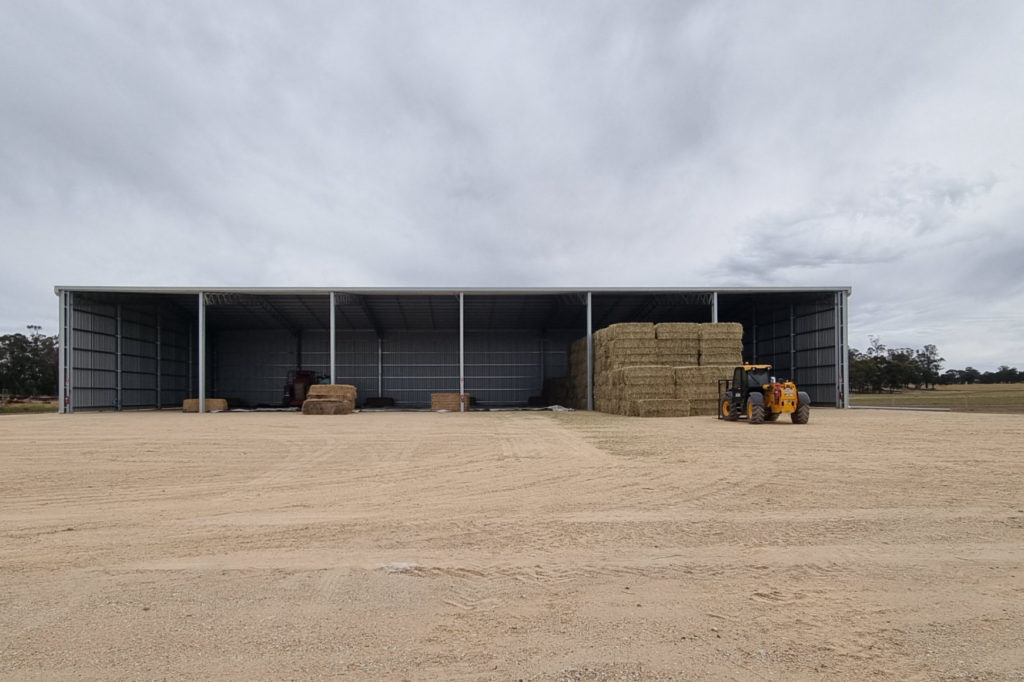
Hay sheds most commonly face east as usually very little weather comes in from the east. With an east-facing shed you will get some morning sun on the front of the shed, meaning that the pad will keep relatively dry, but for the remainder of the day your goods will be protected from direct sunlight.
Prepare a good base and well-drained site
We recommend building the shed up on a gravel pad to ensure drainage away from the shed. Poorly prepared sites can result in water finding its way into the shed and damaging hay.
An Action Custom Gutter system can also help protect your hay from water damage. With this system downpipes are only required at each end of the shed (not down the face of each column).
Ensure your shed has good ventilation
Leave adequate room between each stack of hay for air flow and ventilation. This helps prevent moisture build up, mould and temperature increases.
Bay spacings between 8 metres and 8.5 metres provide effective air movement around the bales.
Having room between each stack also makes accessing and testing the bales easier.
Once stored continue to test and monitor
The hay you store should come out of the shed in the same condition as it went in. So, it is a good idea to regularly test and monitor the moisture levels of your hay to prevent spoilage and spontaneous combustion.

